Swimming Shallow with Blackfish
Free-diving the shallows provides insight into the best tog habitat—and the best places to target them from shore.
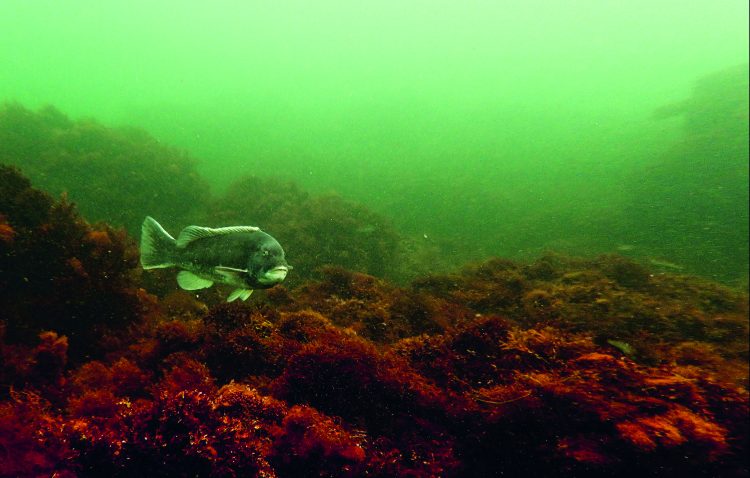
We love our blackfish. We love their teeth and tails and strength. We love their chins. We love the season in which they run, the fall, and the west-setting winds. We even love our beaten hands, full of puncture holes from crabs and hooks, fingers swollen from the November cold. One of the things that many of us love most of all about blackfish is the bottom where they call home. Of all our southern New England species, the blackfish is the king of the rock pile. Yes, stripers and codfish love rocks too, as do black sea bass and fluke, but they are visitors – transient. Blackfish are the rocks.
When fish talk turns to blackfish, the conversation often begins with hook styles, moves to wind, weather and perhaps a bit on crab-hooking methodology, but then it invariably tacks toward structure and rocks…the spots. There is a fine line here, a kind of dance, for no blackfish angler wants to give away his or her prime places. So we broadly mention the rock piles and ledges to keep the conversation from nose-diving into monastic silence. We say things like “west of Cuttyhunk” or “off Newport.” A good blackfisherman is careful and protective of knowledge, more so if that knowledge was earned the hard way with lost anchors or an impossible amount of hung hooks.
For instance, when a local lobsterman tells you of a small boulder field the size of a tennis court, you listen hard and make sure you know exactly where it is. You then give it a try and hang up (hard) three times while anchoring, so you re-anchor, slightly left, slightly right. You give up, but the place, the spot, sits in your head at supper that night and then again at work. On the next good weather day, you go back. This time you start catching. Other boats are near you but on the more fished spots, the well-known real estate.
You notice that your stern is about even with the gable of a large waterfront home, and beyond the gable is a water tower. You burn that info into your mind. You have your blackfish fix—both electronically, via the chart plotter, and visually. This is information we all tend to guard fairly close—but the good news is there are thousands of these rock piles around, thousands of ledges, thousands of rock-studded coves. The thing—the mystery—is that they are not all created equal, at least not in the minds of the blackfish. The fish have their preferences, but since I am not a blackfish, I don’t understand much about them. But, I do know a few things, and those have to do with where the fish are found.
Free-Diving for Blackfish
For close to seven years, I became oddly obsessed with free diving. The obsession centered around really understanding the kinds of coastal habitat we have, the rocks, the eelgrass. I dove as much as I could. Free diving is a brief tour of the underwater world. I took a breath and then sounded, like a sperm whale, only for a much shorter interval and at a much shallower depth, but the idea is the same.
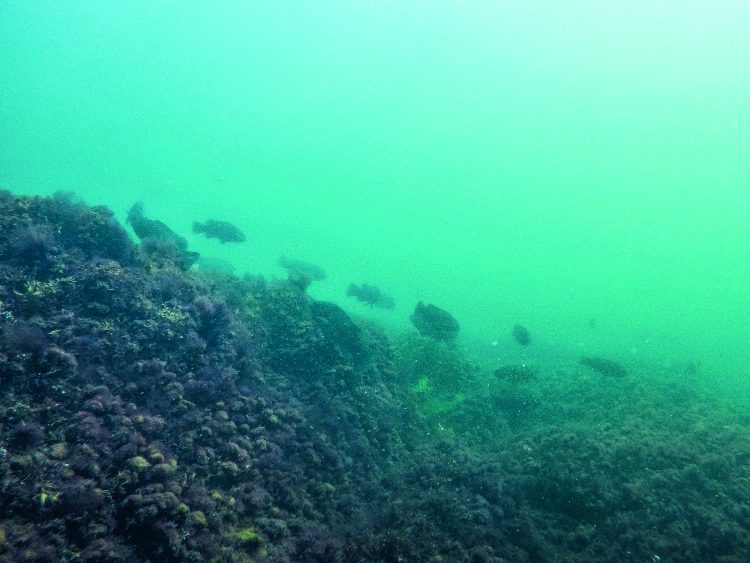
I made mental notes of what I saw – notes as a fisherman sees things. Could I fish this bottom? Could I cast to this spot? If I hooked a fish, could I land it? Half the things I thought about, I forgot the second I reached the surface. Being in the water, being surrounded on all sides it in three dimensions, has a way of making me dreamy and forgetful. I try to remember every detail—how the rocks looked, the seaweed, how the blackfish or stripers looked, their behaviors toward each other, how the sand eels moved, but it’s too much. My mind blanks.
Diving is best lived in the moment of each dive. One breath. Be as present as you can. There should be no other reason than the dive itself … but that is enough transcendence for now.
There are some things I didn’t forget, like the feel of a piece of bottom. What I mean are the feelings we have about a place. An intuition; something. What really perplexed me was the sheer amount of mediocre water – water that looked great, looked like good blackfish habitat yet was devoid of any significant fish. On a single dive covering maybe half a mile of shoreline, I saw only one or two places where the bottom really popped with fish.
Those places have something about them. Maybe the water has a different vibration. When I hit bottom. I looked up and saw a lip of rock angling away to deeper, darker water. I grabbed hold of the rock and pulled myself along, my fins dragging quietly behind me. I pulled myself down the rock face, down the drop. At the bottom of the drop, I saw the white glow of granite cobble, then the blackfish showed. They were all around me, all through the ridge of rock and all through the cobble. The depth change went from 4 feet at the surface of the rock to 25 feet at the bottom. This was blackfish bottom – their house.
After finding a blackfish spot, sometimes I went back and shore-fished for them, catching many from the rocks. It can be productive, especially in late September and early October when they are gathering and heading deeper. Though I must admit that most of my best blackfish bites occurred in deeper water outside of 65 feet. It’s almost as if we get a few different runs of blackfish—the shore/shallow run and the deep run. I think many of the deep-water blackfish stay down almost all the time. But, the main reason I’m talking about blackfishing from shore is because all of my diving is in shallow water— spots from the tidal zone out to a few hundred yards off the coast. I have never—and will never—see what blackfish bottom looks like 80 feet down. I am not one of those free divers who challenges himself to hit deep water. I like knowing that air is 10 or 20 feet above my head.
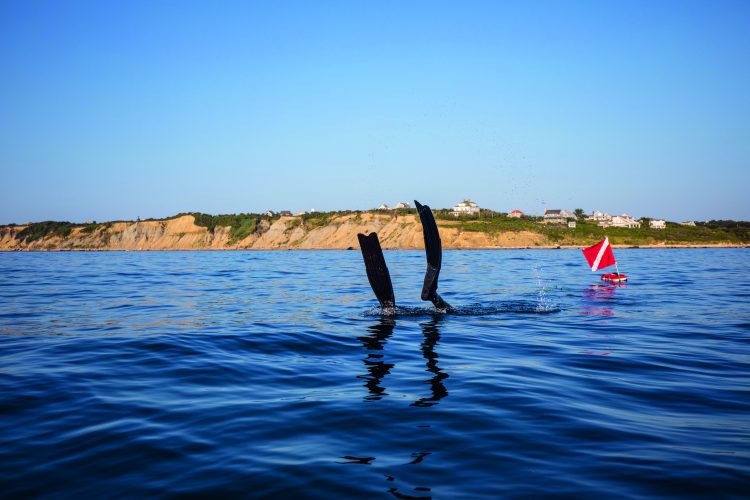
Current, Cover and Camouflage
Blackfish, as a rule, love current and surge. I have seen many during moon-tide drift dives. They are perfectly composed in water that I can barely stay controlled in, but to them, it’s nothing. I admire their grace and presence in a heavy current.
If you know of a strong tide that runs over rock, that’s a good spot, even if there is a lot of boat traffic. The fish are there, both in the eddies behind and along jetties but also down low to bottom in the full gun of tide.
Blackfish also like dark bottom because they blend into it perfectly. Rhode Island abounds in dark bottom – places with depth and a kind of seaweed, a moss that’s deep red in color. The moss clings to the rocks and tends to be cropped tight, but just having dark bottom doesn’t ensure a good spot.

Blackfish Habitat
Blackfish like conspicuous glacial or manmade features, and the biggest one in the general area, the better. Study the shoreline and ask yourself a few questions about what you are standing on. Try to picture the coast without water since blackfish like cracks. They really like cracks and fissures, big ones. A shoreline of big granite slab rocks has at first glance all the qualities of prime blackfish habitat—but much of it is dead water, so figure out the difference.
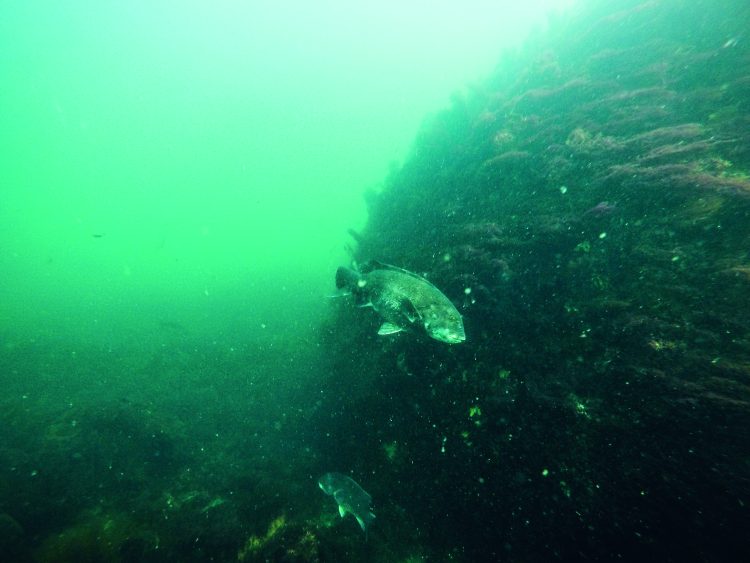
What makes three hundred yards of shoreline different from itself? The fish are often at the edge of that difference – places with terraced shorelines that are like steps. I generally see blackfish at the first step, which is at my feet. I could use a handline and a crab, and do fine, but then I don’t see many fish until I hit the last step before the bottom changes to sand because one has turbulence and the other has depth.
When fishing in an area of sand and boulders, I generally find the fish around the largest boulder, and it’s even better if the boulder juts above the water. This causes the turbulence the fish like, and I think larger-sized boulders also act as a bearing for the fish, a spot where they all can meet and hang out. I also see blackfish in the rocks right where the first wave breaks, where a surfcaster would be casting plugs, and where surfers stage to catch waves.
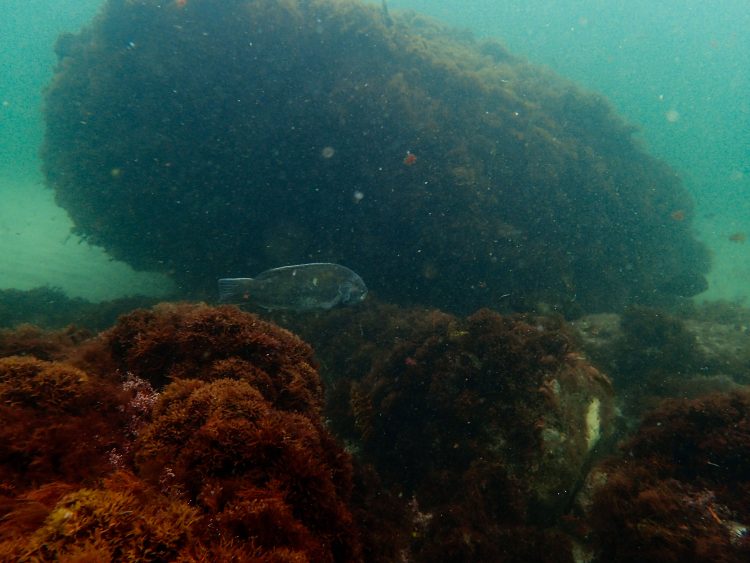
Blackfish from Shore
Some of the biggest blackfish I’ve seen are in the shallowest water. There aren’t many, but some of the females have a real liking toward the tidal zone. I see them in coves and along rock faces, and in the bubble weed. They are often in water that even a child could stand up in, but the fish are very hard to see. Their bodies are brown and lack any white, plus they are backgrounded by brown rocks and brown weeds, so there is no contrast. Even an osprey misses these fish, but I’ve heard of people sight-casting to them, even heard of people trying to get the fish to take a fly or a crab imitation, which if you ask me is harder and carries more bragging rights than taking a permit or mutton snapper on the Florida flats.
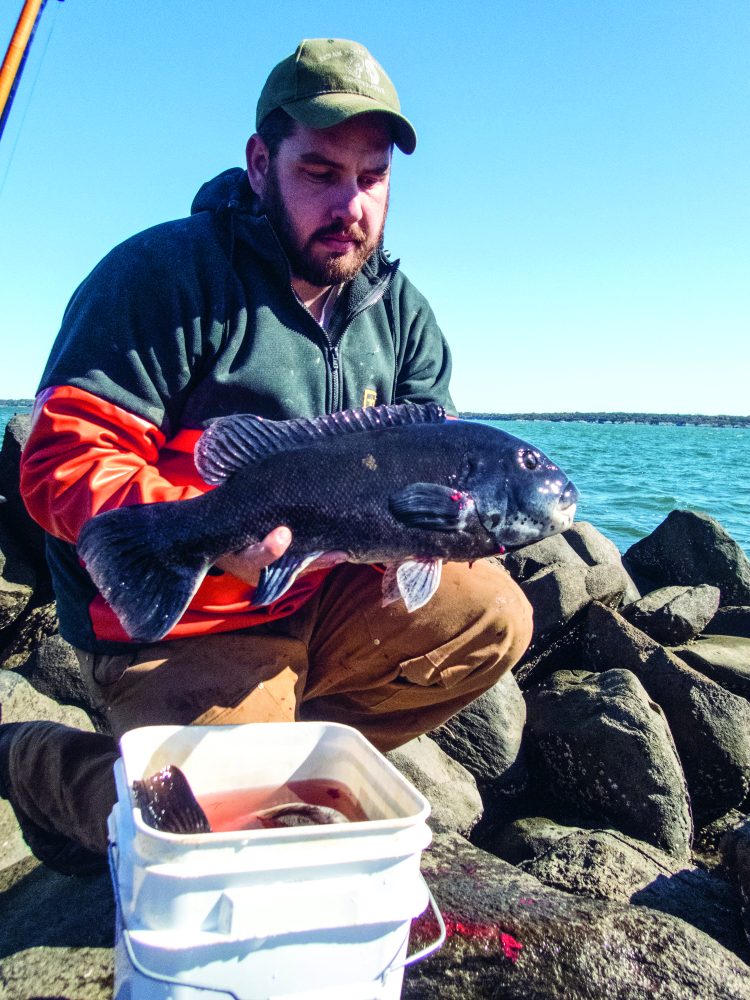
To be really good at shore blackfishing, you need a lot of patience. You must research and hunt down a spot and once you find it, figure out how to fish it. If you cast and don’t hang bottom, try to make that same cast again. When I dove a lot, I took land bearings—that tower, that house, that bridge, anything that would help me if I went back and fished it. However, the hang-ups in blackfishing can wear you down, same as the kind of thinking that plagues all of us in fishing: what is my bait or jig really doing? Has it fallen between two boulders, doing nothing? You need as much awareness as possible about where you are fishing.
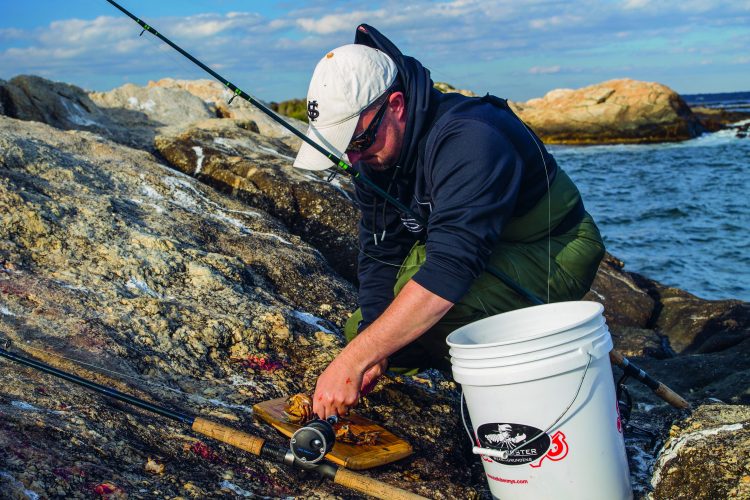
I also tend to favor spots where my casts are short, almost drops. I think it’s easier to feel what is going on when the line is kept close, though you will lose fish. I have taken really good boat blackfish anglers fishing and they find it much harder from shore because nothing is straight up and down. However, the same rules apply—get the fish coming to you by changing crabs often. Fish through the first wave of shorts because the big ones will hear the chew. Blackfish are noisy feeders – underwater, I can hear them destroying crabs or mussels, so if I can hear it, they can definitely hear it and are eventually drawn in. Often, the biggest fish comes an hour into shore fishing, so be ready for it. To lose a big blackfish is painful, but to lose a big shore blackfish is like a dagger to the heart.
Related Content
WATCH: The Benefits of Spinning Tackle for Tautog (Blackfish) Fishing
2 on “Swimming Shallow with Blackfish”
-
Yakanglr Solid read Capt. John.
-
Pat Bombino great read very informative
Leave a Reply